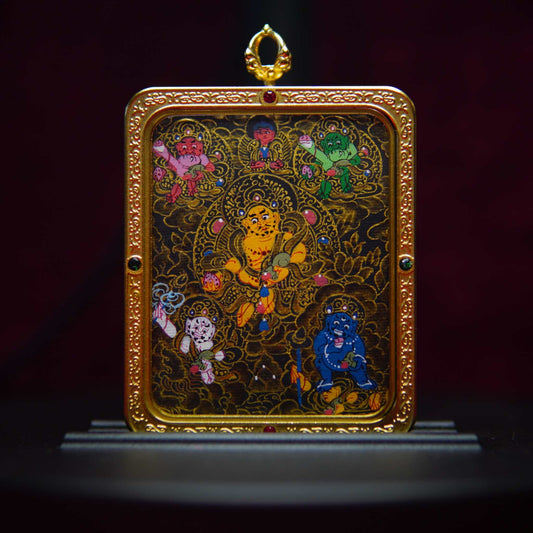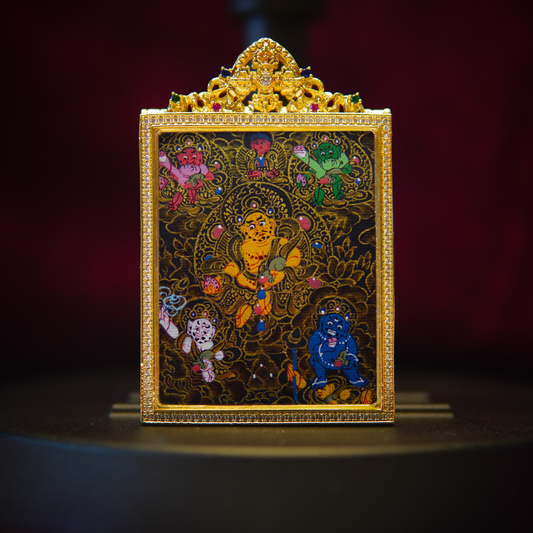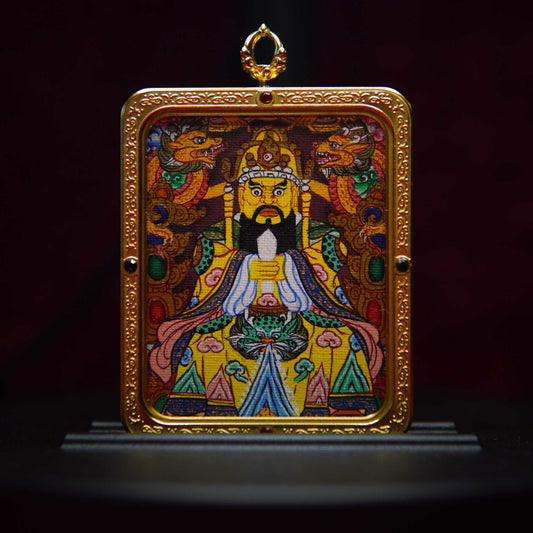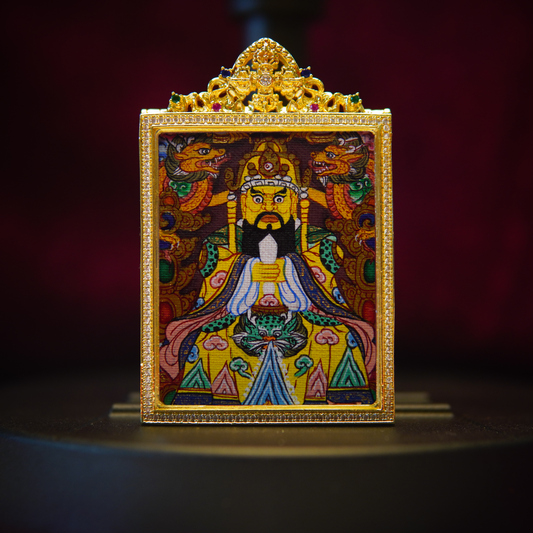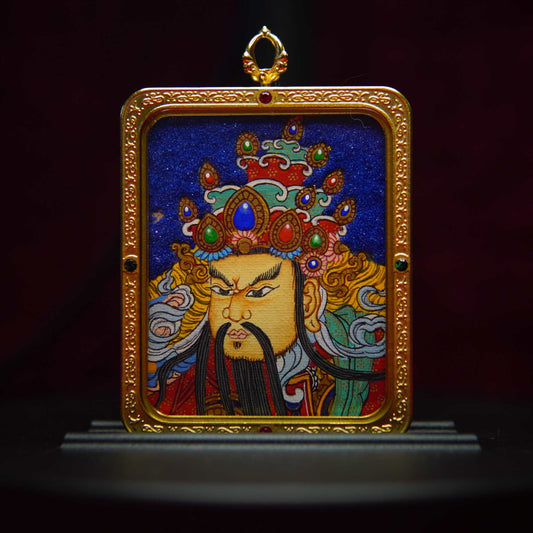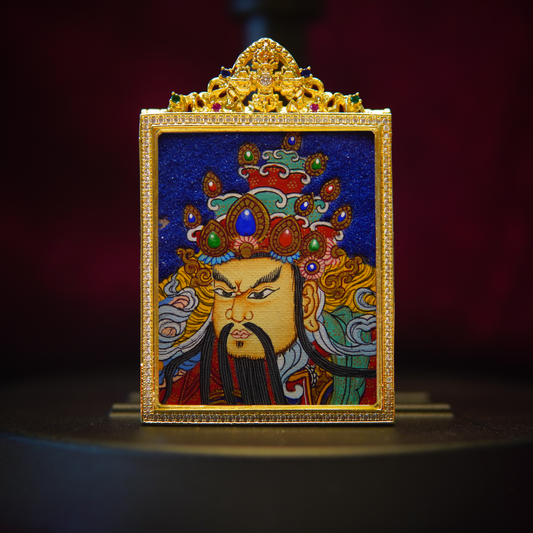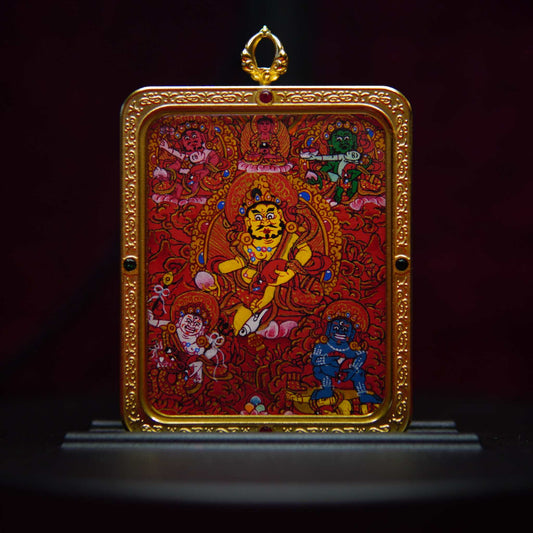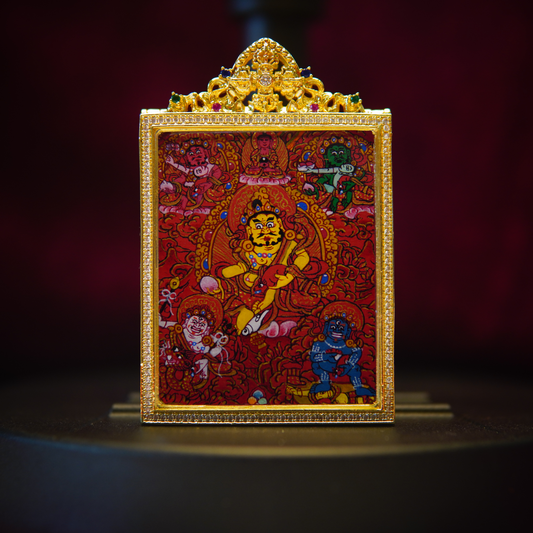Unlock Zen: Transform Your Style with a Buddhist Necklace
zendo- Unlock Zen: Transform Your Style with a Buddhist Necklace
- Introduction to Buddhist Necklaces
- What are Buddhist Necklaces?
- The Cultural Significance of Buddhist Necklaces
- History and Evolution of Buddhist Necklaces
- The Symbolism Behind Buddhist Necklaces
- Understanding the Symbols and Meanings
- Common Symbols in Buddhist Jewelry
- Benefits of Wearing a Buddhist Necklace
- Spiritual Benefits
- Emotional and Psychological Benefits
- How Buddhist Necklaces Enhance Personal Style
- Selecting the Right Buddhist Necklace for You
- Factors to Consider When Choosing a Necklace
- Material and Aesthetic Choices
- How to Integrate a Buddhist Necklace into Your Wardrobe
- How to Care for Your Buddhist Necklace
- Cleaning and Maintenance Tips
- Preserving the Spirituality of Your Necklace
- FAQs about Buddhist Necklaces
- Can Anyone Wear a Buddhist Necklace?
- Are There Specific Occasions to Wear Buddhist Jewelry?
- How to Meditate with a Buddhist Necklace?
- Conclusion
- Embracing Zen Through Style
- The Timeless Appeal of Buddhist Necklaces
Introduction to Buddhist Necklaces
What are Buddhist Necklaces?
Buddhist necklaces represent far more than mere adornments; they embody spiritual significance deeply rooted in Buddhist traditions. These sacred pendants typically feature carefully crafted symbols, deities, or mantras that serve as constant reminders of Buddhist principles. The intricate artistry found in authentic Buddhist necklaces, particularly those featuring hand-drawn thangka pendants, exemplifies the meticulous attention to detail that honors centuries-old traditions. Each pendant carries its unique vibration and intention, making it a powerful conduit for spiritual connection rather than simply decorative jewelry.
The Cultural Significance of Buddhist Necklaces
Across myriad Asian cultures, Buddhist necklaces hold profound cultural importance that transcends aesthetic appeal. In Tibet, Nepal, and Bhutan, these sacred adornments frequently serve as talismans offering protection during life's tumultuous journeys. Meanwhile, in countries like Thailand and Myanmar, they function as visible expressions of devotion and faith. The thangka pendant necklace, with its richly detailed iconography, stands as a quintessential embodiment of this cultural heritage. For diaspora communities worldwide, these necklaces establish a tangible connection to ancestral wisdom and spiritual lineage, bridging geographical divides through shared symbolism.
The Mahasthamaprapta Thangka Pendant represents one of the most significant pieces in Buddhist jewelry tradition. This exquisite pendant features Mahasthamaprapta Bodhisattva, who symbolizes the Buddha's wisdom of observation and the power of mindfulness. For those seeking inner tranquility amidst life's chaos, this pendant serves as a powerful reminder to remain present and cultivate mindfulness in daily life. The meticulously hand-drawn thangka artwork captures the essence of this revered bodhisattva, offering both spiritual protection and aesthetic beauty.
History and Evolution of Buddhist Necklaces
The lineage of Buddhist necklaces stretches back millennia, evolving alongside Buddhism itself. Early practitioners adorned themselves with rudimentary amulets fashioned from natural materials like bone, wood, and simple metals. As Buddhism traversed the Silk Road and beyond, these devotional objects underwent profound transformation, absorbing artistic influences from each culture they encountered. The Tang Dynasty in China marked a pivotal period when Buddhist jewelry reached unprecedented levels of craftsmanship, incorporating precious metals and gemstones. The contemporary renaissance of Buddhist necklaces represents a fascinating confluence of ancient symbolism with modern aesthetics, appealing to both traditional practitioners and those newly exploring Buddhist principles.
The Symbolism Behind Buddhist Necklaces
Understanding the Symbols and Meanings
Buddhist necklaces serve as portable repositories of profound spiritual teachings, each symbol carefully encoded with layers of meaning. These symbols function as visual mantras—concentrated spiritual energy in material form. When worn mindfully, they establish a subtle yet persistent link between the physical and metaphysical realms. The potency of these symbols derives not merely from their aesthetic qualities but from the intentions imbued during their creation and the wearer's relationship with them. For many practitioners, wearing these symbols represents a tacit commitment to embody the qualities they represent—be it compassion, wisdom, or resilience in the face of suffering.
"When we wear sacred symbols close to our heart, we invite their qualities to permeate our being. The symbol on your necklace isn't just something you wear—it's something you become."
Common Symbols in Buddhist Jewelry
The rich iconography of Buddhist necklaces encompasses a vast array of meaningful symbols, each carrying distinct spiritual significance:
- The Buddha figure symbolizes enlightenment achieved and the potential for awakening within all beings
- The Dharma Wheel (Dharmachakra) represents Buddha's teachings and the eightfold path
- The Lotus Flower embodies spiritual purity emerging from muddy circumstances
- Bodhisattvas like Avalokiteshvara or Mahasthamaprapta represent specific aspects of enlightened compassion and wisdom
- Mantras such as Om Mani Padme Hum condense complex teachings into concentrated syllables
- The Endless Knot signifies the interconnectedness of all phenomena
These symbols aren't merely decorative elements but serve as sophisticated spiritual technologies designed to align the wearer with specific energetic frequencies. The contemplation of these symbols during meditation can deepen one's understanding of Buddhist principles exponentially.
Benefits of Wearing a Buddhist Necklace
Spiritual Benefits
Adorning oneself with a Buddhist necklace creates a constant energetic reminder of one's spiritual aspirations. This tactile connection to sacred symbolism serves as an anchor, gently pulling consciousness back to present awareness throughout daily activities. Many practitioners report that these pendants facilitate a more consistent meditation practice by providing a focal point for concentration. The proximity of these symbols to the heart chakra—a vital energy center in Eastern traditions—is particularly significant, as it helps harmonize emotional patterns and foster compassion. Additionally, these necklaces often become imbued with the spiritual energy of their wearers over time, transforming them into highly personalized sacred objects.
Emotional and Psychological Benefits
Beyond spiritual advantages, Buddhist necklaces offer tangible psychological benefits in our increasingly frenetic world. The mere act of touching one's pendant during moments of stress triggers a parasympathetic response, activating what scientists call the "relaxation reflex." This simple gesture can dramatically reduce cortisol levels and heart rate variability. For individuals navigating anxiety or emotional turbulence, these necklaces provide a palpable reminder to return to breath awareness and equanimity. Many wearers describe a sense of psychological fortification—as if carrying a pocket of serenity through chaotic environments. This psychological anchoring effect proves particularly valuable during significant life transitions or challenging interpersonal dynamics.
How Buddhist Necklaces Enhance Personal Style
The aesthetic versatility of Buddhist necklaces allows for seamless integration into diverse personal styles. These pendants transcend conventional fashion categories, complementing everything from minimalist wardrobes to bohemian ensembles. The inherent authenticity of spiritually significant jewelry adds depth to one's personal expression that mass-produced accessories simply cannot replicate. Contemporary designers increasingly recognize this appeal, creating Buddhist-inspired pieces that honor traditional symbolism while incorporating modern design sensibilities. Unlike trendy accessories that quickly become passé, Buddhist necklaces possess a timeless quality that elevates any outfit with subtle yet profound significance.
Selecting the Right Buddhist Necklace for You
Factors to Consider When Choosing a Necklace
Selecting an appropriate Buddhist necklace warrants thoughtful consideration beyond mere aesthetic preference. First, contemplate which spiritual qualities you wish to cultivate—compassion, wisdom, protection, or abundance—as different symbols resonate with specific energies. Consider your spiritual lineage or the particular teachings that most profoundly impact your practice. Authenticity remains paramount; pieces created with reverence by artisans who understand the symbolism carry significantly more spiritual potency than mass-produced replicas. The physical attributes matter as well—choose a comfortable weight that allows for daily wear without becoming cumbersome. Finally, trust your intuition; often, practitioners report feeling inexplicably drawn to particular pendants that later prove especially meaningful on their spiritual journey.
Material and Aesthetic Choices
Buddhist necklaces encompass a diverse spectrum of materials, each carrying distinct properties and symbolism:
| Material | Properties | Symbolic Associations |
|---|---|---|
| Silver | Durable, naturally antimicrobial | Clarity, purification, lunar energy |
| Gold | Non-reactive, malleable | Illumination, solar energy, incorruptibility |
| Sandalwood | Aromatic, lightweight | Humility, meditation, natural purity |
| Jade | Extremely durable, cool to touch | Harmony, balance, protection |
The aesthetic presentation varies considerably—from intricately detailed thangka pendants requiring close examination to bold statement pieces visible from across a room. Consider not only your personal style but also the contexts in which you'll wear the necklace. Some practitioners prefer subtle designs for professional environments while choosing more elaborate pieces for spiritual gatherings or personal meditation.
How to Integrate a Buddhist Necklace into Your Wardrobe
Incorporating a Buddhist necklace into your daily attire requires little effort yet yields significant impact. For maximum versatility, consider neutral-toned pendants that complement diverse color palettes. Layer your spiritual pendant with other meaningful necklaces of varying lengths for a contemporary aesthetic that maintains reverence. When wearing elaborate Buddhist pendants, balance the visual complexity with simpler clothing—allow the spiritual symbolism to become the focal point rather than competing with other bold elements. Remember that these necklaces transcend ordinary fashion considerations; wear them with intentionality rather than as casual accessories. Many practitioners establish rituals around donning their necklaces, using the moment to set intentions for mindful presence throughout their day.
How to Care for Your Buddhist Necklace
Cleaning and Maintenance Tips
Proper maintenance of your Buddhist necklace ensures both its physical longevity and spiritual potency. For metal pendants, gentle cleansing with warm water and mild soap suffices for routine care—avoid harsh chemicals that might erode delicate engravings. Wooden elements benefit from occasional conditioning with food-grade mineral oil to prevent drying and cracking. Store your necklace in a dedicated pouch or box, ideally lined with soft fabric, to prevent tangling and scratching when not worn. Particularly valuable or delicate thangka pendants warrant special consideration—keep them away from prolonged sunlight exposure which can fade the intricate artwork. Remember that these aren't ordinary possessions but sacred objects deserving reverential handling.
Preserving the Spirituality of Your Necklace
Beyond physical maintenance, preserving the spiritual integrity of your Buddhist necklace requires mindful attention. Many traditions recommend periodic ritual cleansing—passing the pendant through sandalwood incense smoke or placing it briefly on a crystal cluster overnight during the full moon. Avoid wearing your spiritual jewelry in spiritually discordant environments or during activities that contradict Buddhist principles. Some practitioners maintain a small altar where they place their necklace when not wearing it, surrounding it with other sacred objects to maintain its energetic charge. Remember that these pendants absorb subtle energies from their surroundings; treating them with consistent reverence enhances their spiritual resonance exponentially over time.
FAQs about Buddhist Necklaces
Can Anyone Wear a Buddhist Necklace?
While Buddhist necklaces remain accessible to everyone regardless of their religious background, approaching them with appropriate respect honors their cultural and spiritual significance. Non-Buddhist wearers should familiarize themselves with the meaning behind their chosen symbols rather than treating them as exotic accessories. Cultural appreciation, not appropriation, forms the cornerstone of respectful engagement with these sacred objects. Many Buddhist teachers actively encourage the widespread use of these symbols as vehicles for spreading compassionate awareness. The intention behind wearing the necklace—whether for spiritual connection, mindfulness reminder, or aesthetic appreciation—matters more than one's formal religious affiliation.
Are There Specific Occasions to Wear Buddhist Jewelry?
Buddhist necklaces adapt seamlessly to diverse contexts, though certain traditions suggest particularly auspicious occasions. Lunar calendar celebrations, meditation retreats, and Dharma teachings present especially meaningful opportunities to don your spiritual pendant. Some practitioners reserve specific pieces for ritual use while maintaining others for daily wear. Rather than rigid rules, consider the principle of mindful intention—wear your necklace when it serves as a meaningful reminder of your spiritual values. Many find that rather than occasional wearing, consistent daily adornment provides the most profound benefit, creating an uninterrupted connection to Buddhist principles throughout life's varied circumstances.
How to Meditate with a Buddhist Necklace?
Your Buddhist necklace can significantly enhance meditation practice through several approaches. One effective method involves holding the pendant gently between your palms in prayer position during the opening moments of meditation, setting an intention aligned with the symbol's meaning. Alternatively, some practitioners utilize their pendants as tactile focal points, similar to mala beads, touching the symbol rhythmically with each breath to maintain present awareness. For visualization practices, meditating upon the iconography of your pendant—absorbing its symbolic qualities and imagining them permeating your consciousness—can deepen your connection to specific Buddhist principles. Remember that the necklace serves as a tool for cultivating awareness rather than an object of attachment itself.
Conclusion
Embracing Zen Through Style
Integrating a Buddhist necklace into your daily life represents a subtle yet profound shift—a harmonious marriage between spiritual practice and personal expression. These sacred adornments bridge the seemingly disparate worlds of fashion and spirituality, demonstrating that mindful presence need not conflict with aesthetic appreciation. Through the simple act of wearing meaningful symbolism, you create countless moments of potential awakening throughout ordinary days. The gentle weight of a pendant against your chest serves as a persistent whisper amid life's clamor—an invitation to return to breath, awareness, and compassion. In a culture often characterized by mindless consumption, choosing jewelry with intentionality and spiritual significance constitutes a quiet revolution of consciousness.
The Timeless Appeal of Buddhist Necklaces
The enduring allure of Buddhist necklaces transcends fleeting fashion trends, connecting contemporary wearers to an unbroken lineage of spiritual seekers spanning thousands of years and countless cultures. These pendants—whether ancient heirlooms or newly crafted treasures—carry forward teachings that have transformed countless lives throughout history. As global interest in mindfulness practices continues expanding, these tangible symbols of Buddhist wisdom gain renewed relevance for addressing modern existential challenges. By adorning yourself with these meaningful symbols, you participate in preserving and transmitting spiritual technologies that offer genuine solutions to suffering. The humble Buddhist necklace thus becomes not merely a personal accessory but a vehicle for perpetuating timeless wisdom in an ever-changing world.

